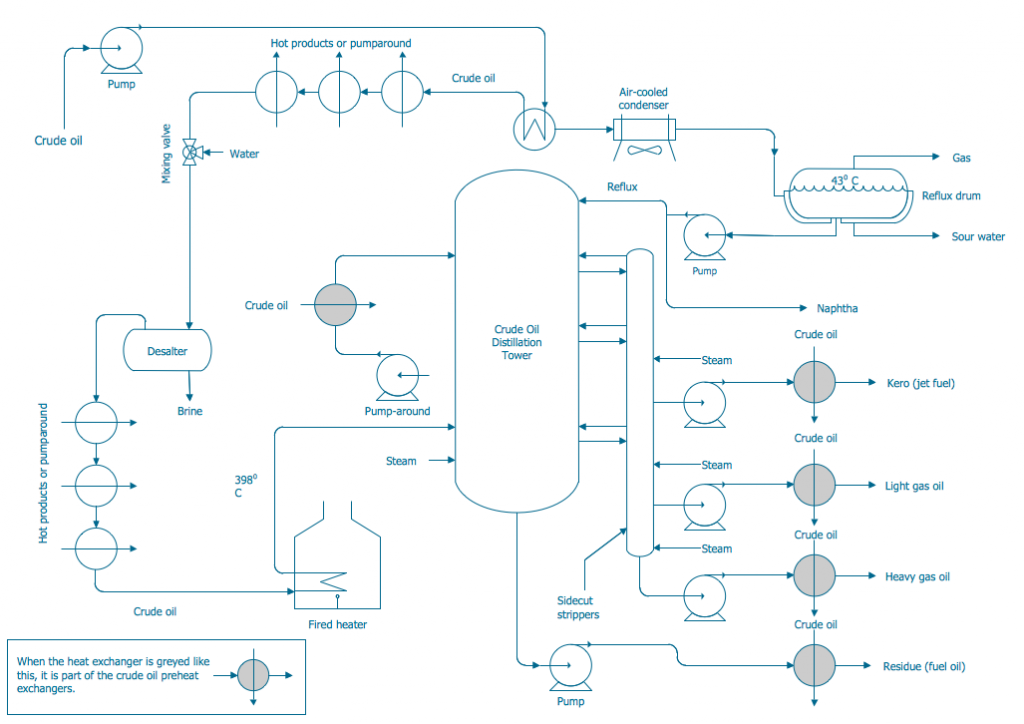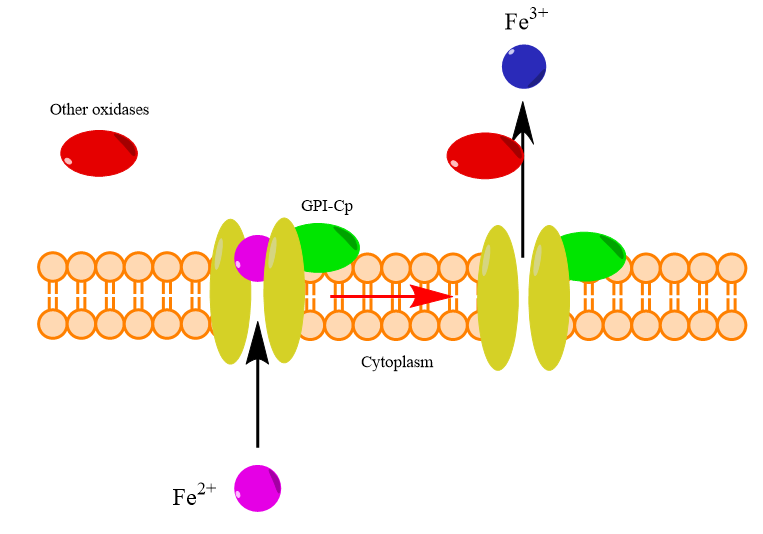13 Schemes
Read time: 2 minutes
Overview
This chapter will briefly discuss the types of schemes.
Sections in this chapter
Diagrams
Schemes are a type of diagram that shows the steps in a process. In chemical engineering, schemes (or schematics) are often used to explain a process at a macroscopic scale, e.g., the purification of crude oil (Scheme 13.1).

In chemistry, schemes are used to present steps in a chemical reaction pathway (Scheme 13.2) or total synthesis (Scheme 13.3). There are several things to keep in mind when designing these schemes:
- Keep molecules oriented the same way from starting materials to products. In the schemes below, the starting molecule stays consistently in the same orientation across reaction steps.
- Reagents are shown above the arrow
- Conditions, solvents, and yields are shown below the arrow.
- Consider if you want to include reaction details in the scheme,
or label them ‘a, b, c’ and describe the details in the caption. - Define all short forms and acronyms in the caption (e.g., TES, TBDMS, Bn, THF)
- Use colour cautiously. Colour is a great way to show changes from starting materials to products (Scheme 13.2) or highlight portions of a molecule and where they were derived (Scheme 13.3). It defeats the purpose if everything is highlighted with colour.
Reaction schemes


Learning ChemDraw
Most of your schemes will be made using the program ChemDraw (get it here). This software has a lot of function and capabilities, but there is a learning curve. Read or watch tutorials to help you learn all the features and shortcuts, which will make the processing of creating figures and schemes more efficient! We recommend the ChemDraw Wizard youtube videos to start.
Catalytic Cycles
Another type of scheme in chemistry is the catalytic cycle, which shows the process of catalysis in a reaction. There are so many examples of poorly drawn catalytic cycles out there that don’t follow this rule: Catalytic cycles should be nice, clean circles!
Catalytic Cycle ChemDraw Template
Keep it simple
The best rule to follow when designing Schemes is to keep it simple. First, think about the message you are trying to convey with the Scheme, then cut out any extra information. Schemes are useful for simplifying how to represent a process, for example showing complex structures and general processes as cartoons like in Scheme 13.4.


